📥 Export Viewtracker Data
Most built-in Viewtracker reports allow you to export data as a CSV file. The available metrics vary depending on which report you are using. This page provides a quick overview of accessing each report's CSV export.
📖 Find more information on the collected data here: Viewtracker's Data Structure.
Export Overview
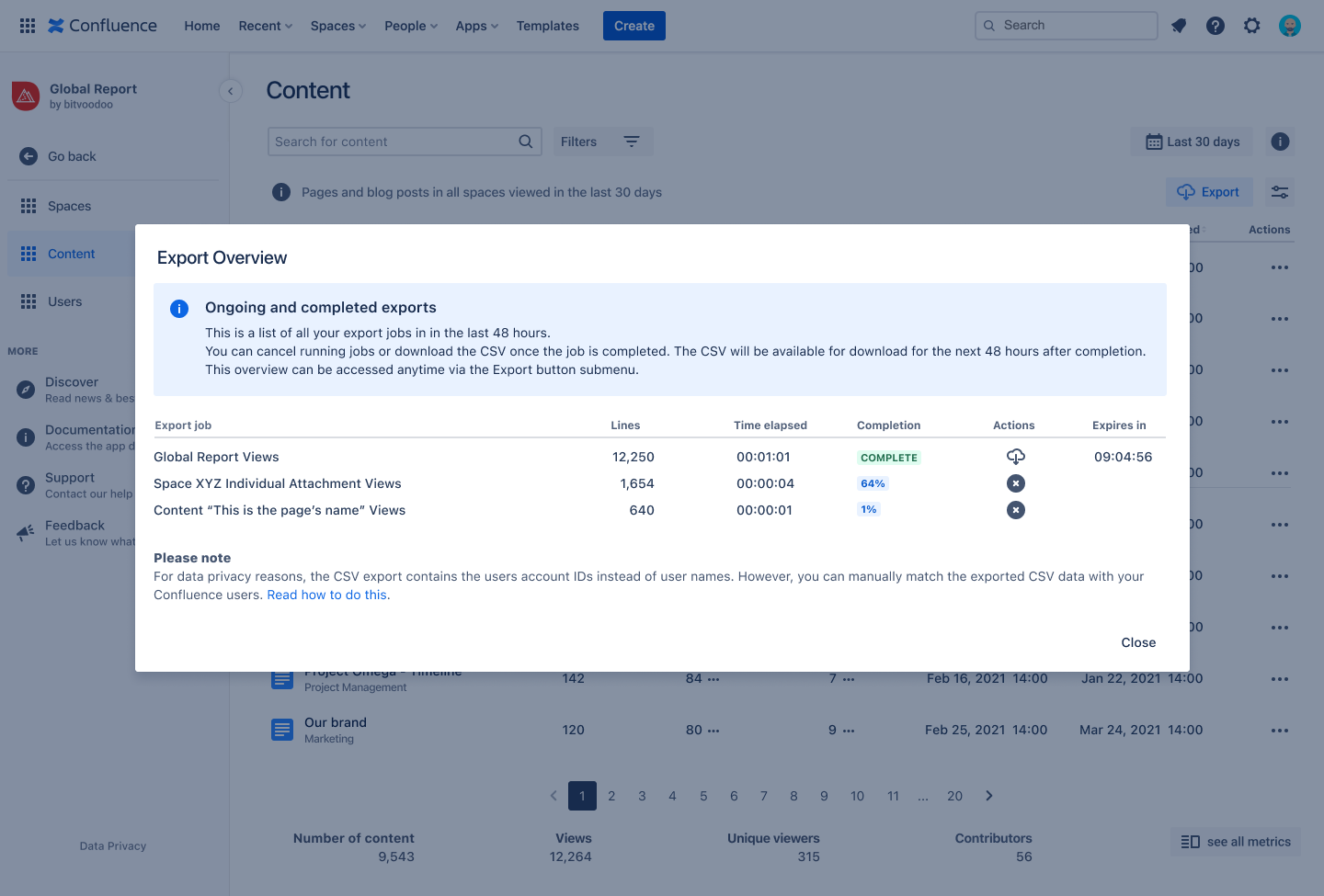
The export overview displays all your exports initiated within the last 48 hours, along with their progress and status. Once a CSV file is completed, it will be available for download for 48 hours. You can download the file as often as you like during this period. Additionally, if needed, you can halt the production of the CSV file before it is finished.
This overview can be accessed through the export button in the reports. Below are the corresponding examples.
CSV files available for download in the Export Manager are secured with an authentication check. This means that only the user who created the export can download the CSV file. If the URL for downloading the CSV file is shared with other users, they will receive a message stating that the download cannot be completed because permission is missing.
Global Report
Tap the Export button to export the views, edits and creations.
Apps → Viewtracker Global Report → Export → Views/Edits/Creations
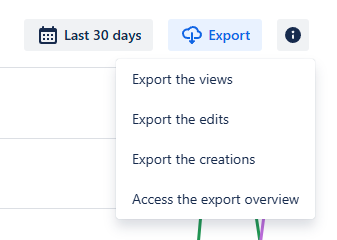
The export is available for page views, edits and creations.
Space → Space Report → Export → Views/Edits/Creations
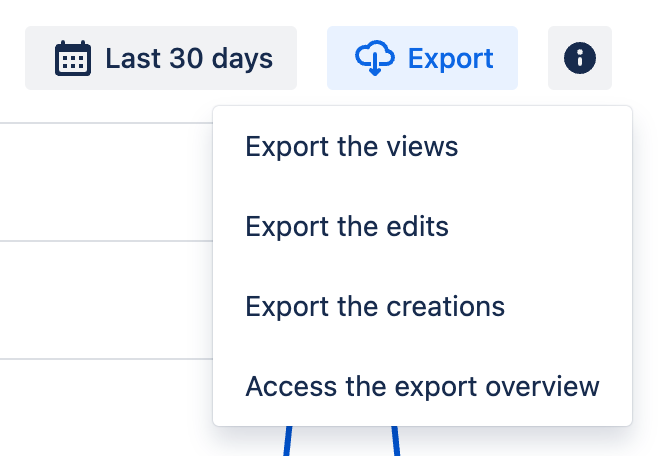
The export is available for the following metrics:
views (export of the views for the selected date range)
edits (export the page edits for the selected date range)
attachments views (export of the attachments views for the selected date range)


You can export the individual attachment views or the aggregated data in the Attachment Report.
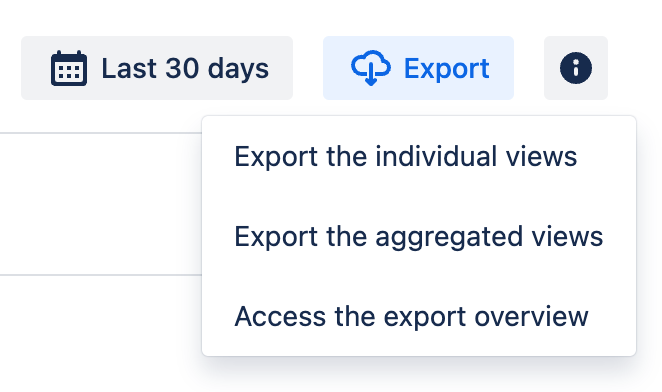
The Search Report allows you to export individual searches or aggregated data as shown in the report.
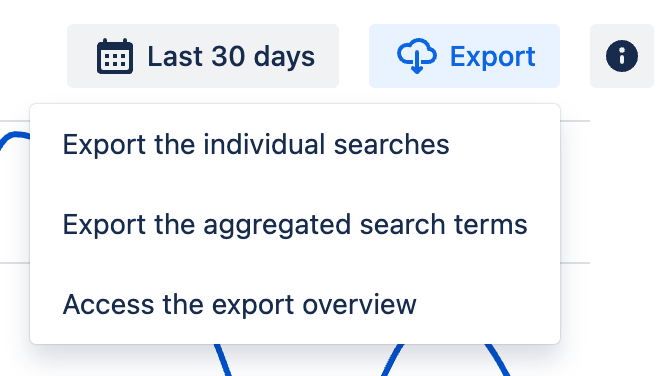
Export the individual views of Confluence components, tracked third-party content, or the reports' aggregated data.
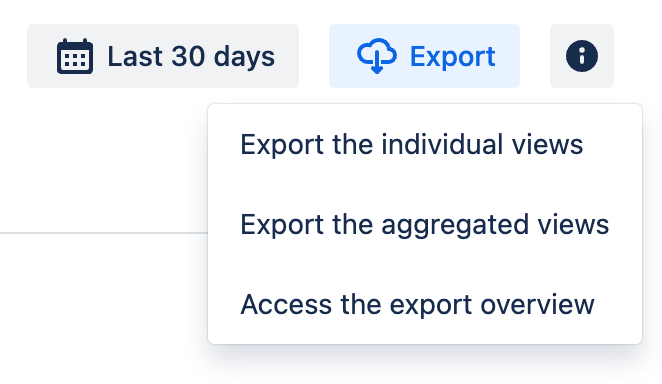
Export Options
When generating a CSV file, the app checks whether the user initiating the export has permission to view any content or space names included in the exported data. This verification process may extend the time required to create the CSV files.

Exporting Data when the Export of User Names is Disabled
The export dialog offers the following options:
“No Sensitive Data”
The standard export includes only content and space IDs, ensuring the CSV file does not contain sensitive information.
“Includes Content and Space Names”
This option includes content and space names, which may contain sensitive data.

Exporting Data when the Export of User Names is Enabled
Administrators can enable the export of user names. With this feature, the export type selection will change to:
“No sensitive Data”
The standard export includes only content, space, and user account IDs, ensuring the CSV file is free from sensitive information.
“Includes Content, Space and User Names
This export includes content, space, and user names, containing sensitive data.
Additional reading
Find much more information on the collected data here: Viewtracker Cloud Data Storage
If you need the user’s names instead of the Account ID, please consult our FAQ: How do I find the user name in the exported data?
If you would like to enable the export of user names, please review: Enable the Export of the Users' Names
If you see “protected content”, please consult our FAQ: What is "Protected Content" in Viewtracker Cloud Reports?
To access the views data via the Viewtracker API, please consult: Viewtracker API
